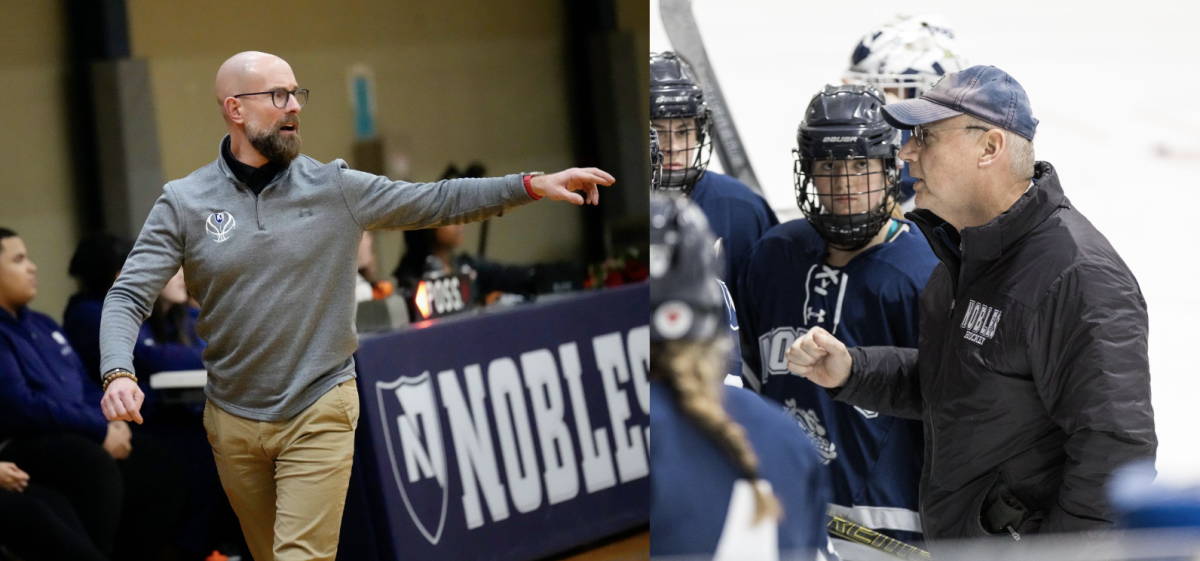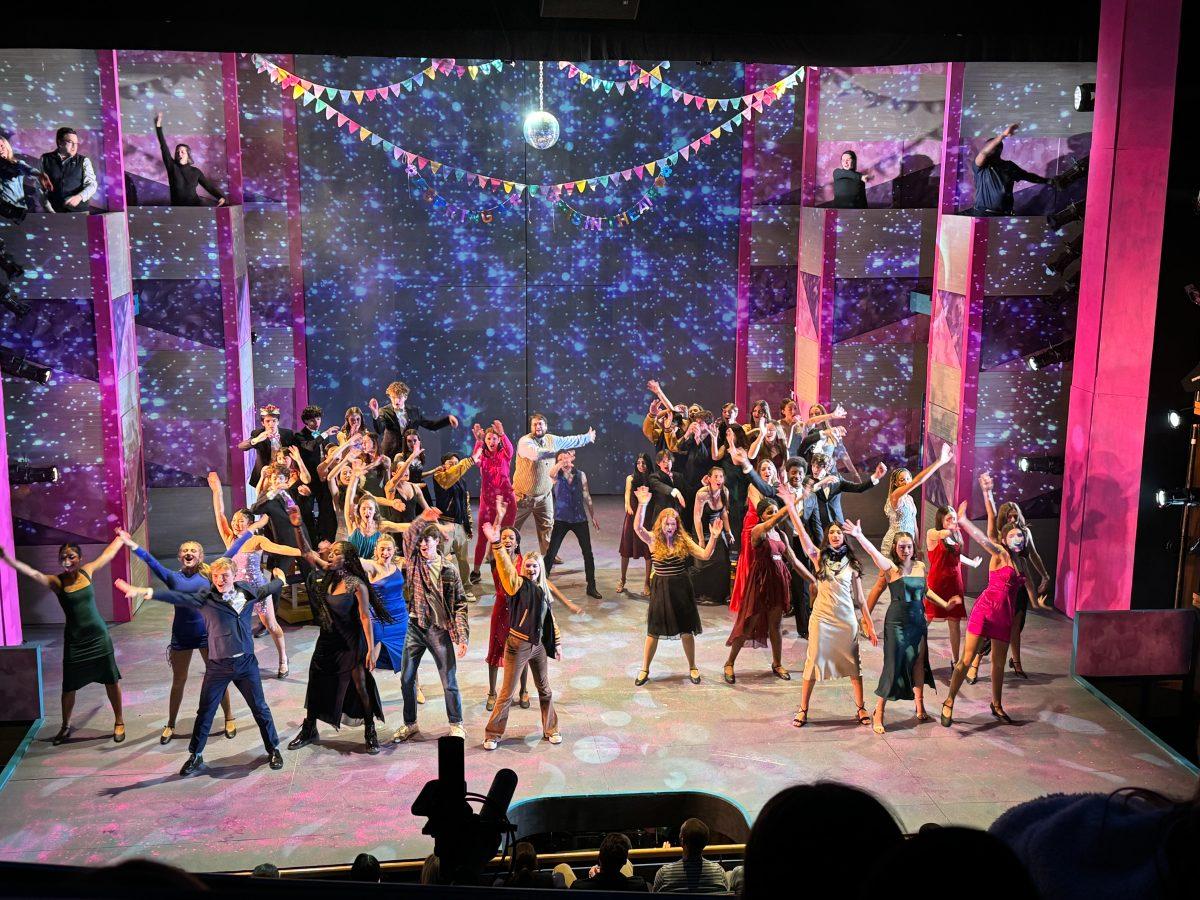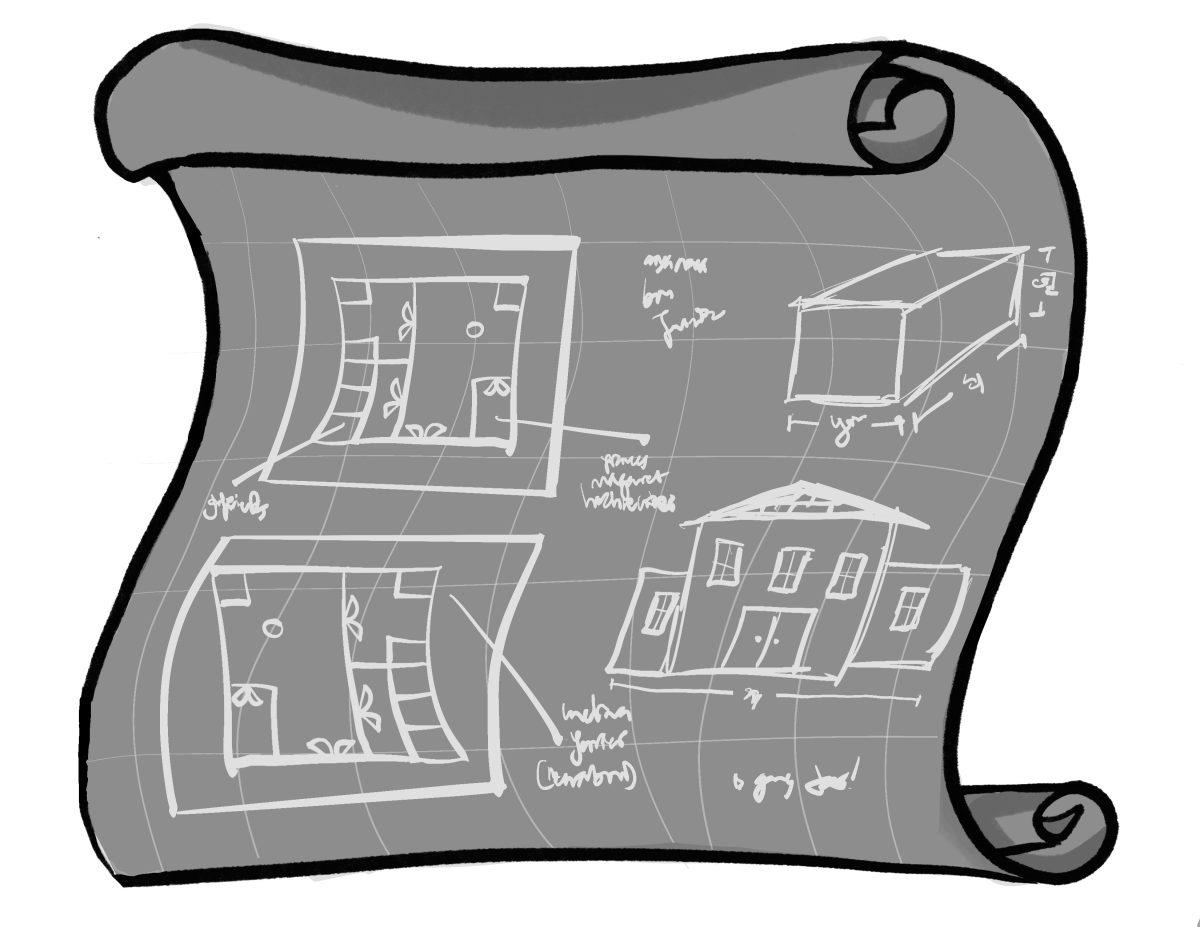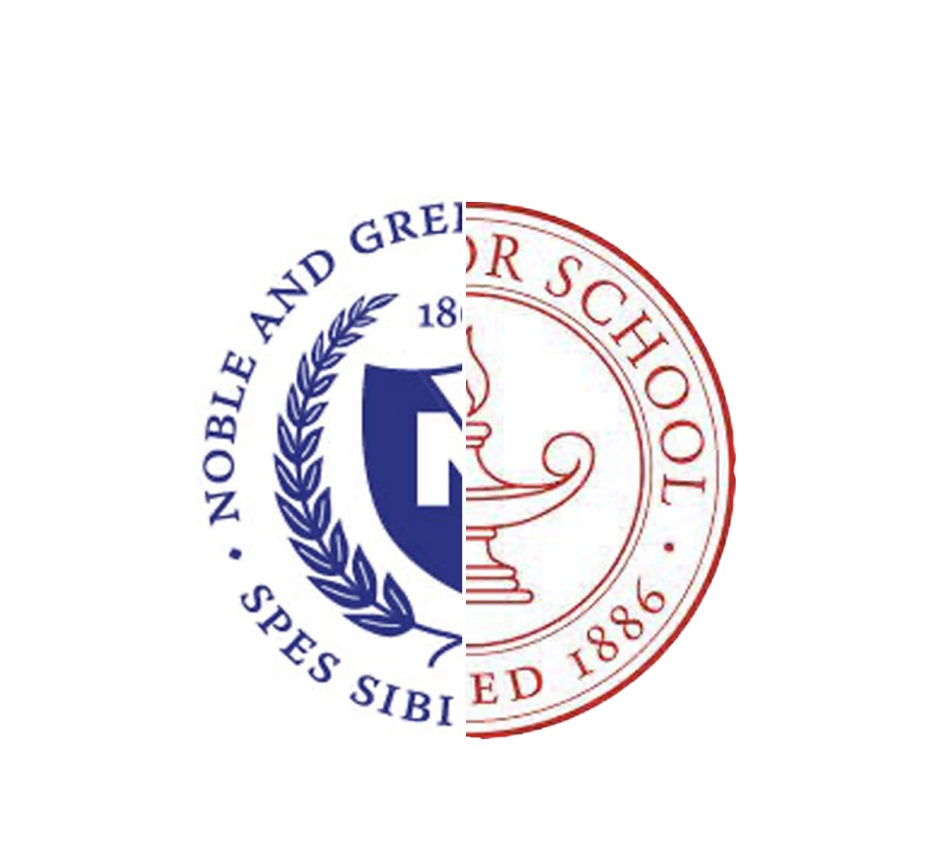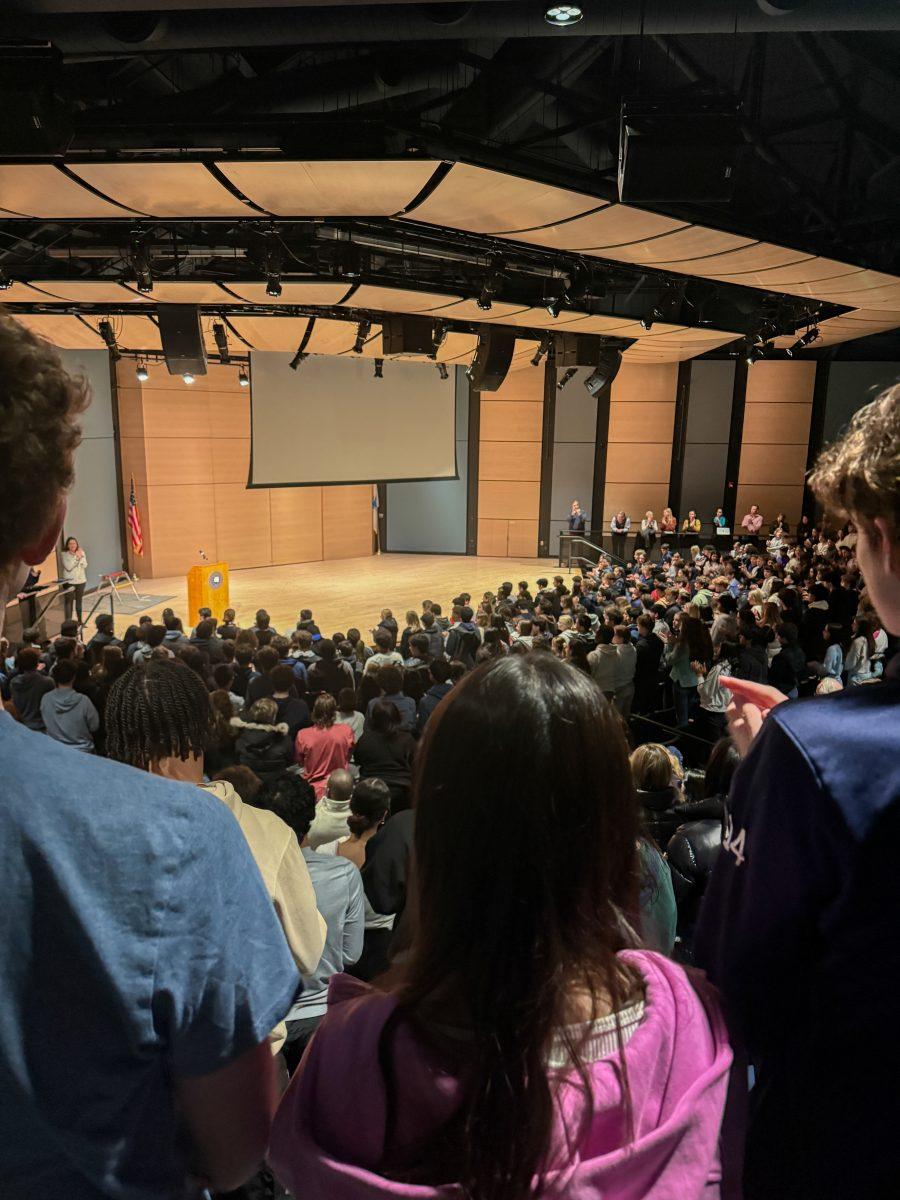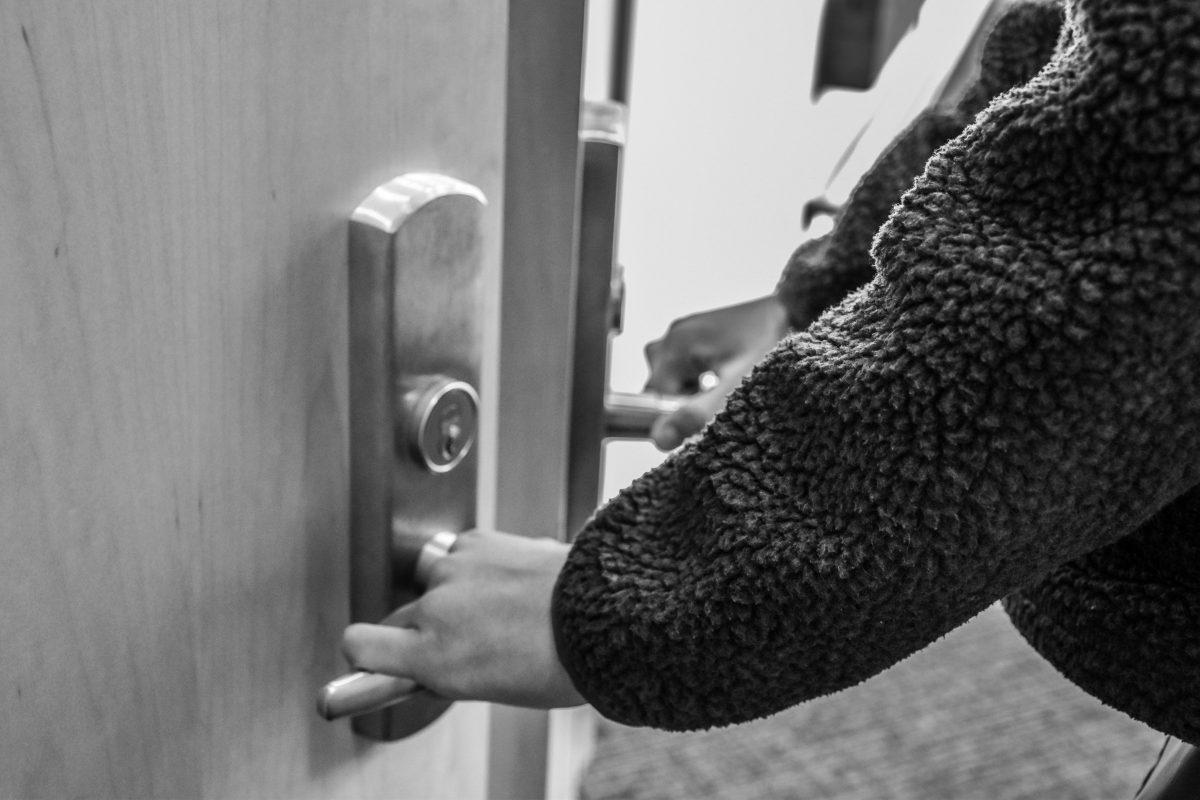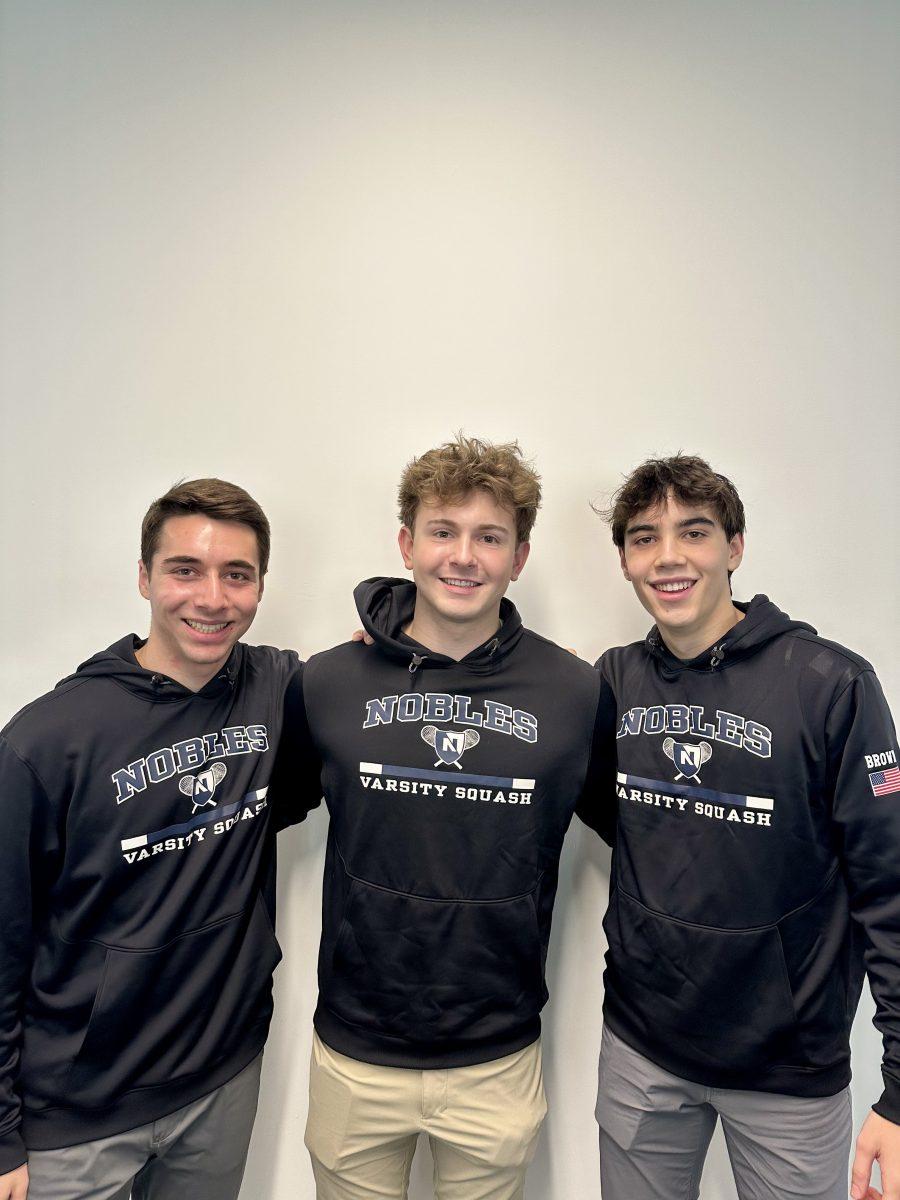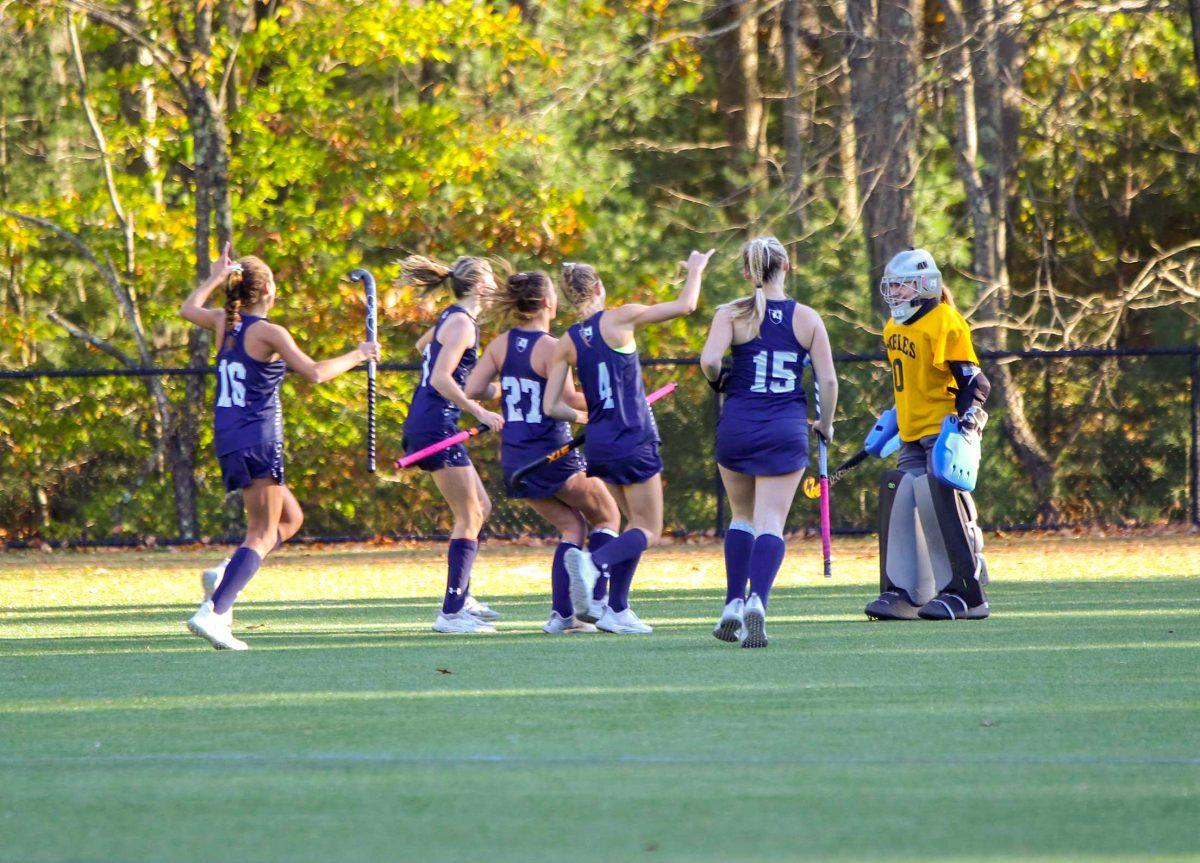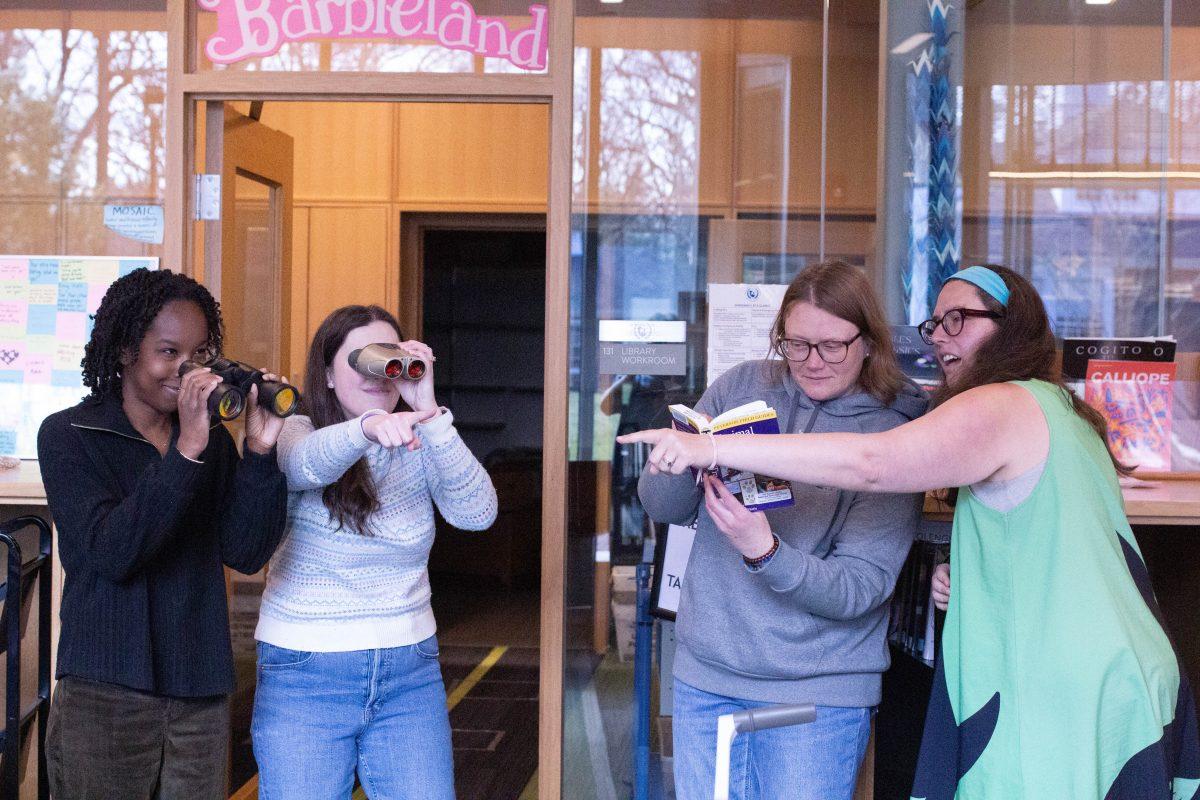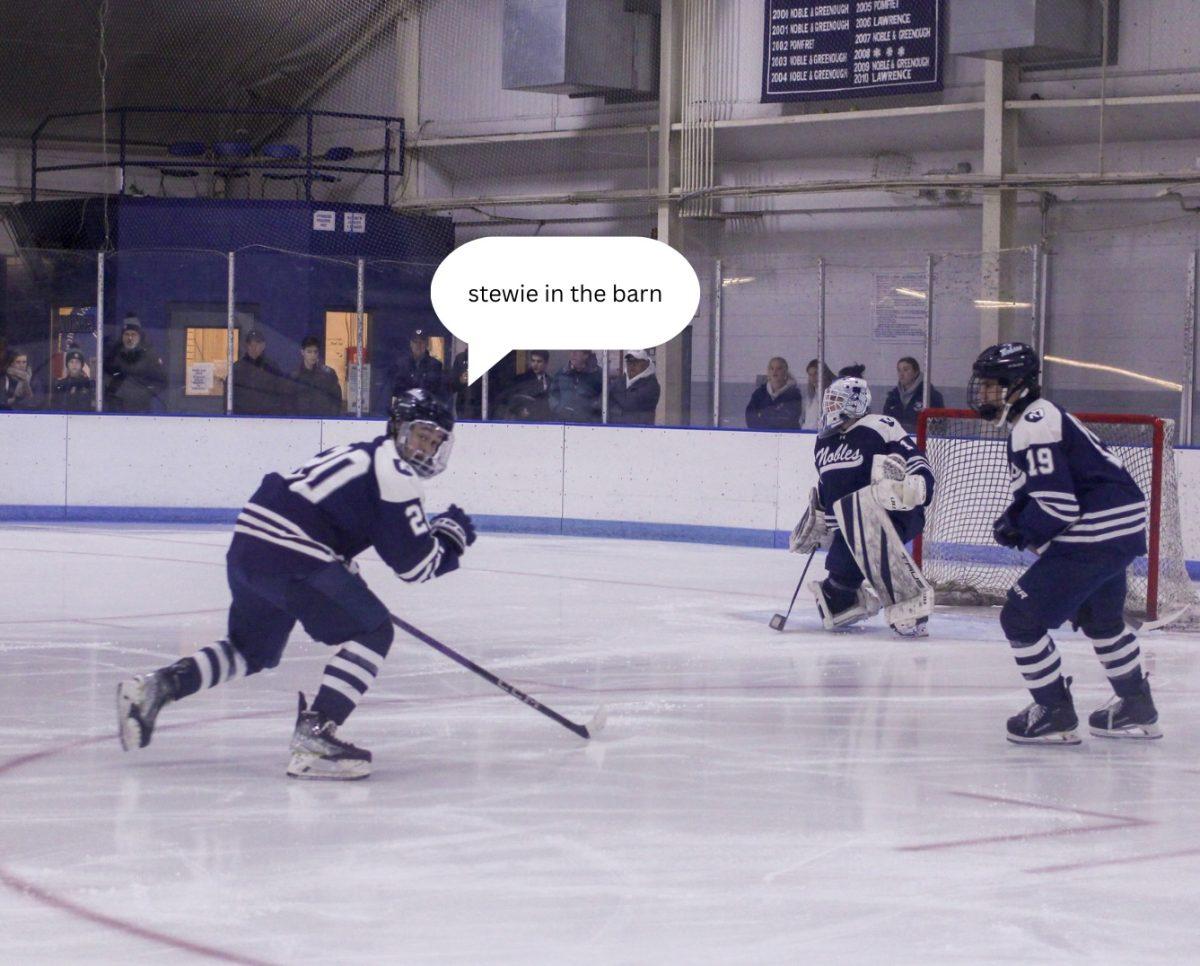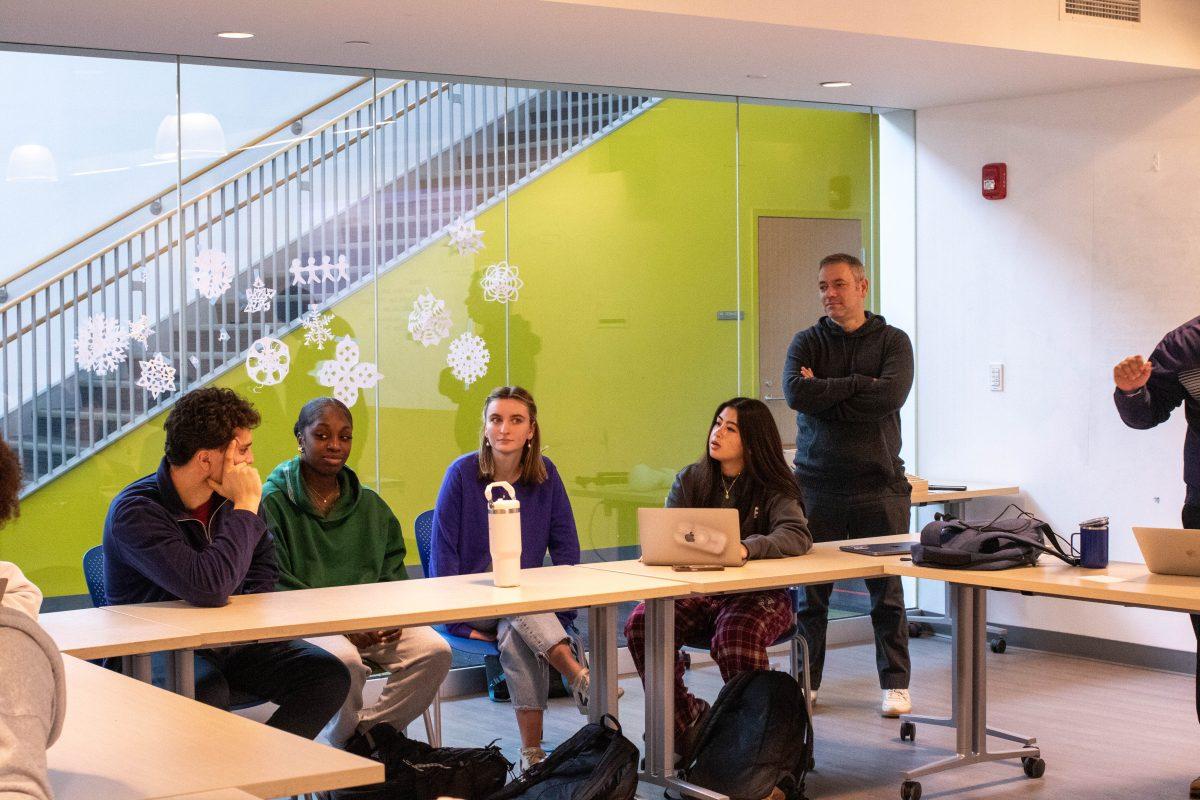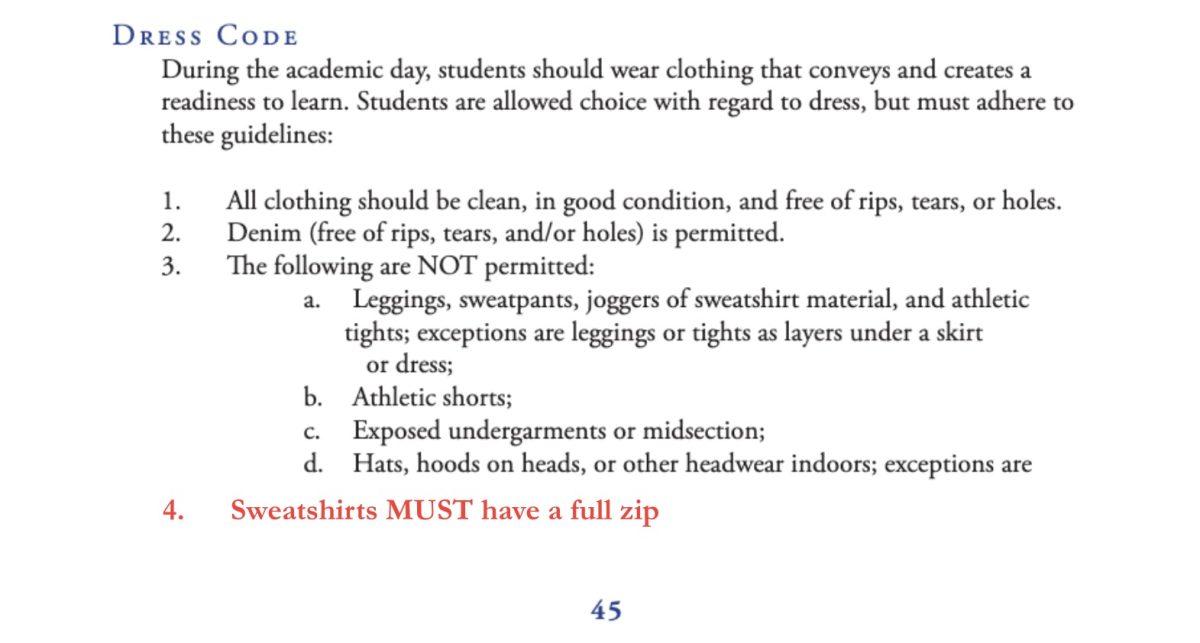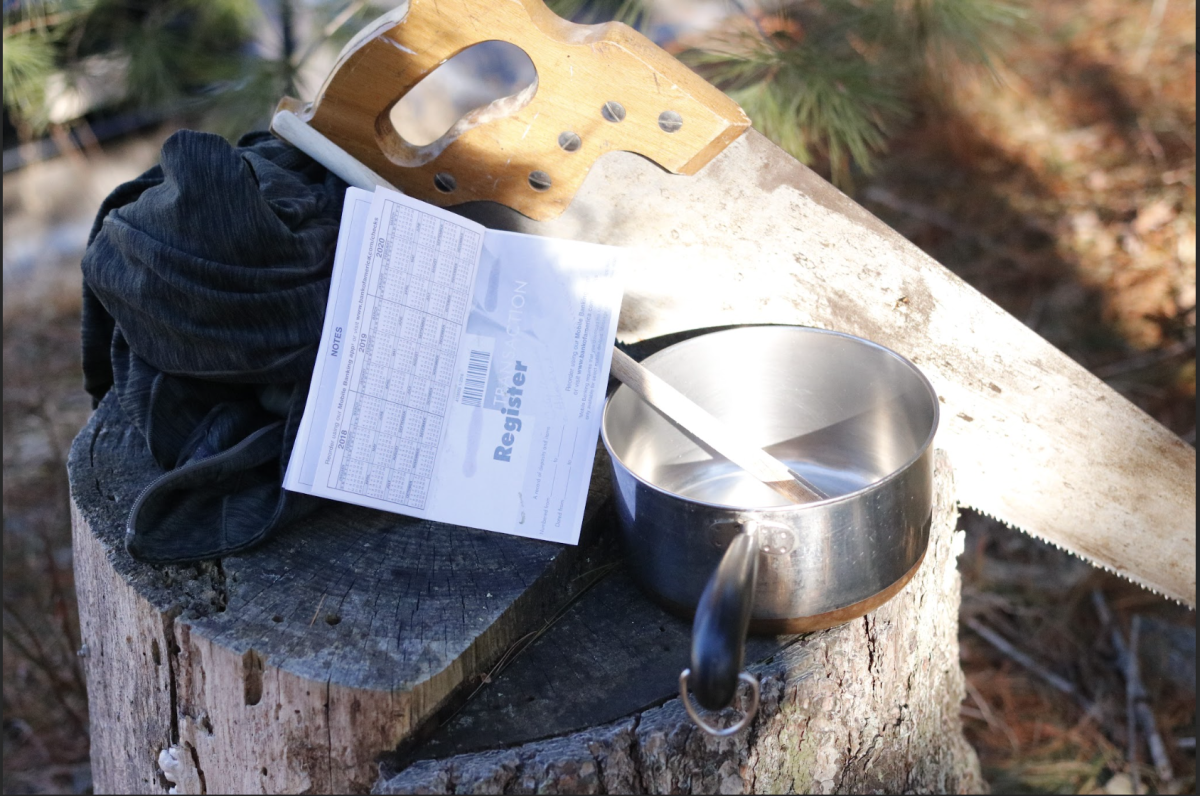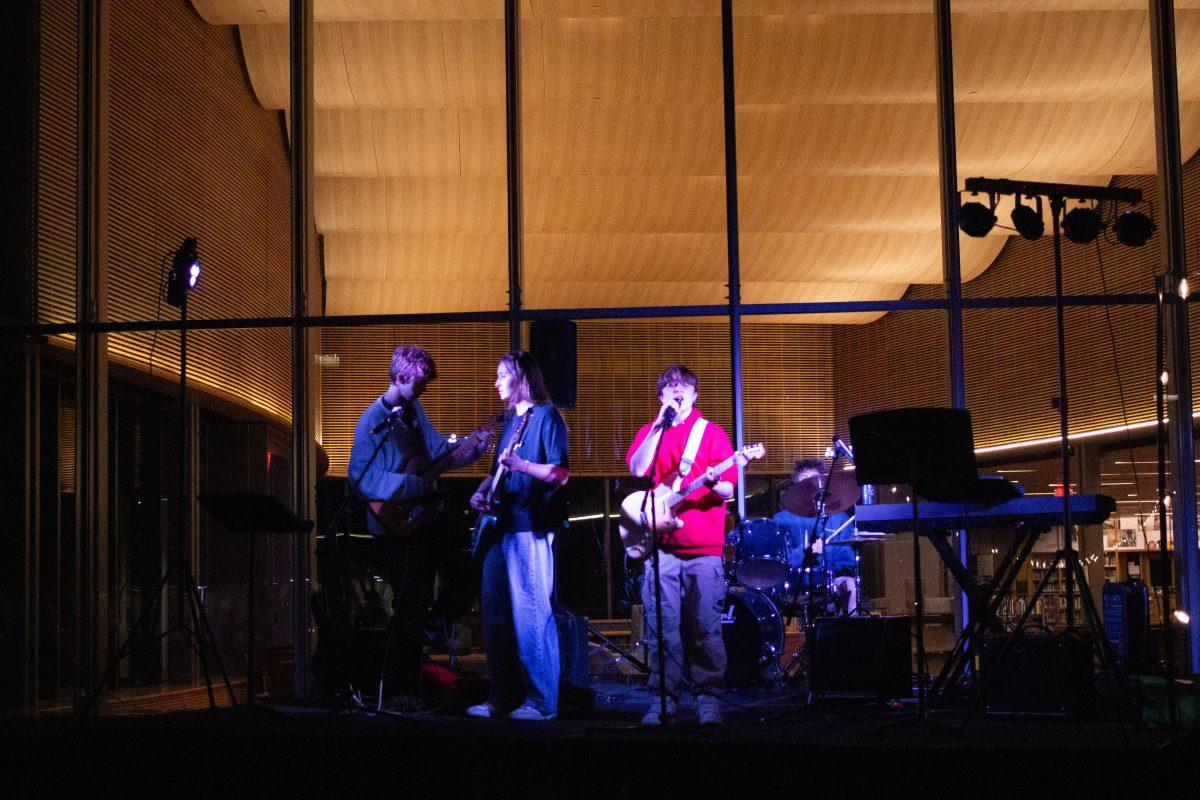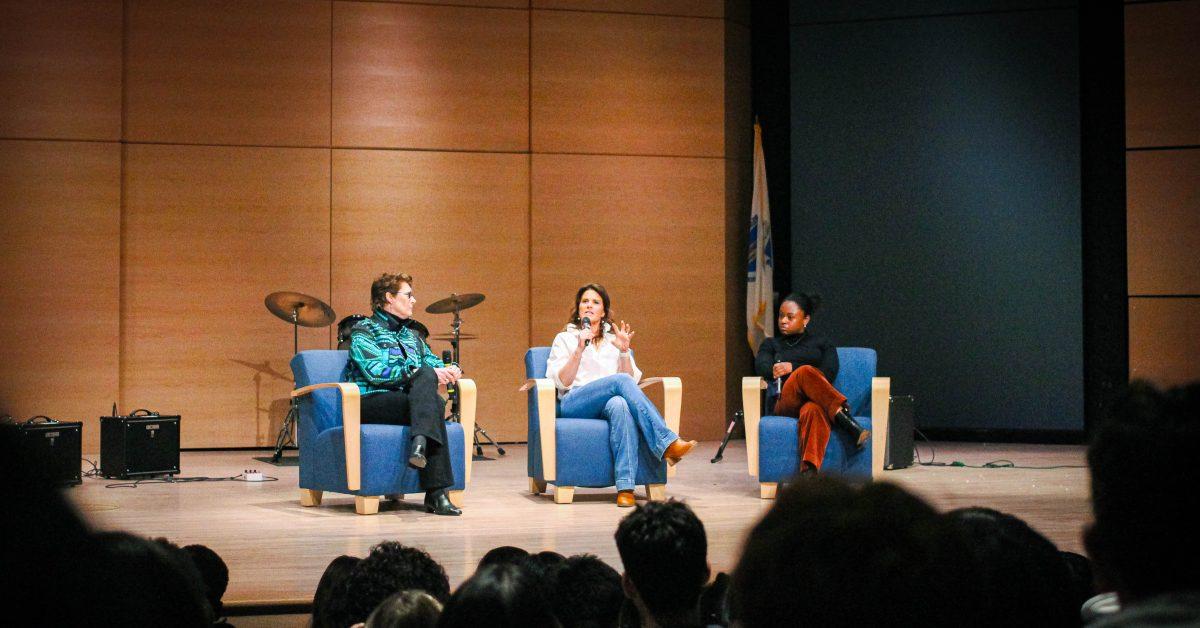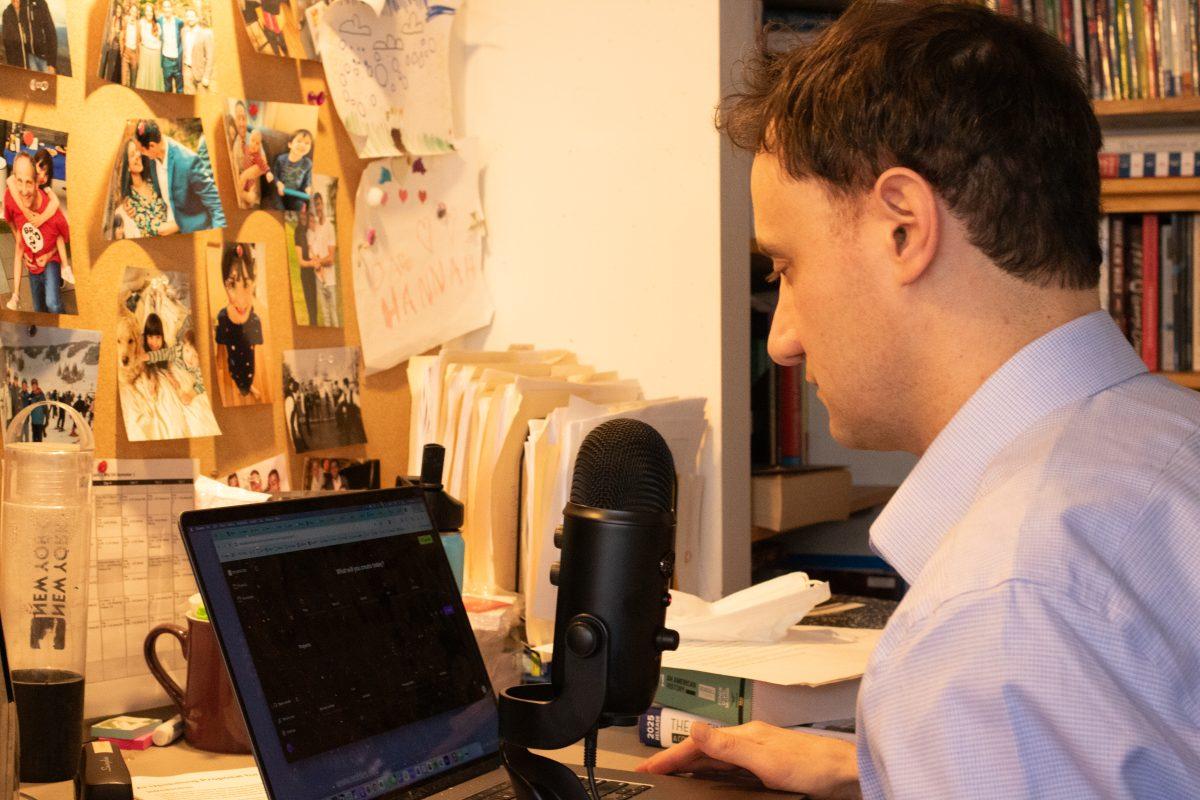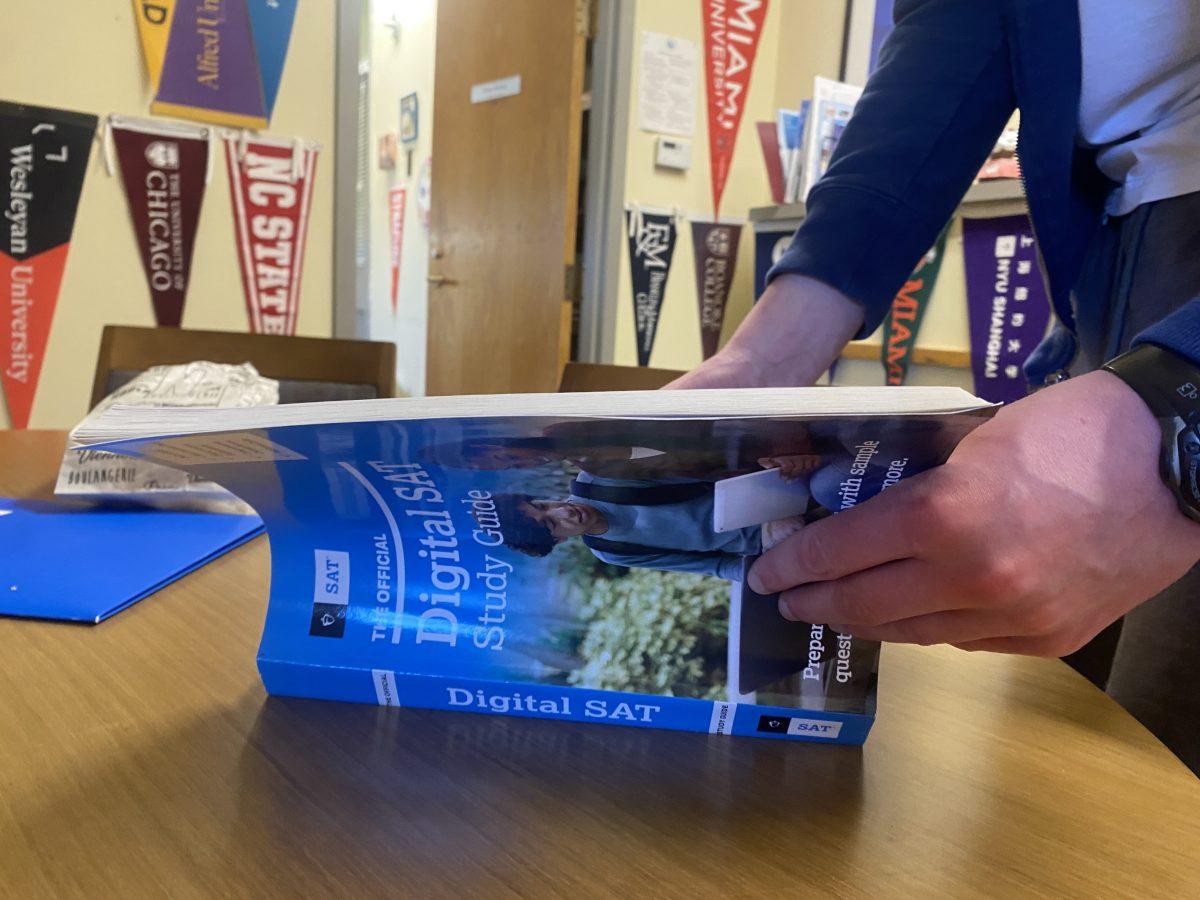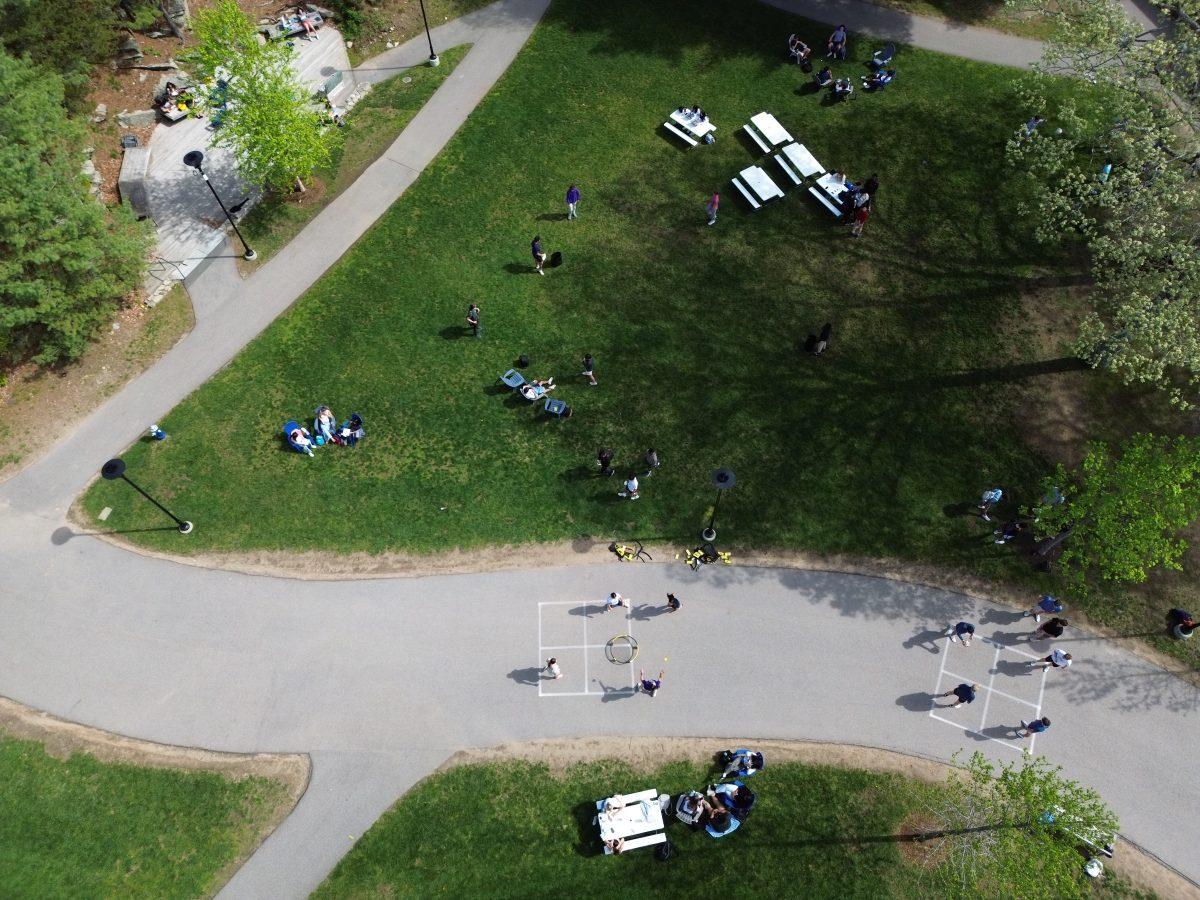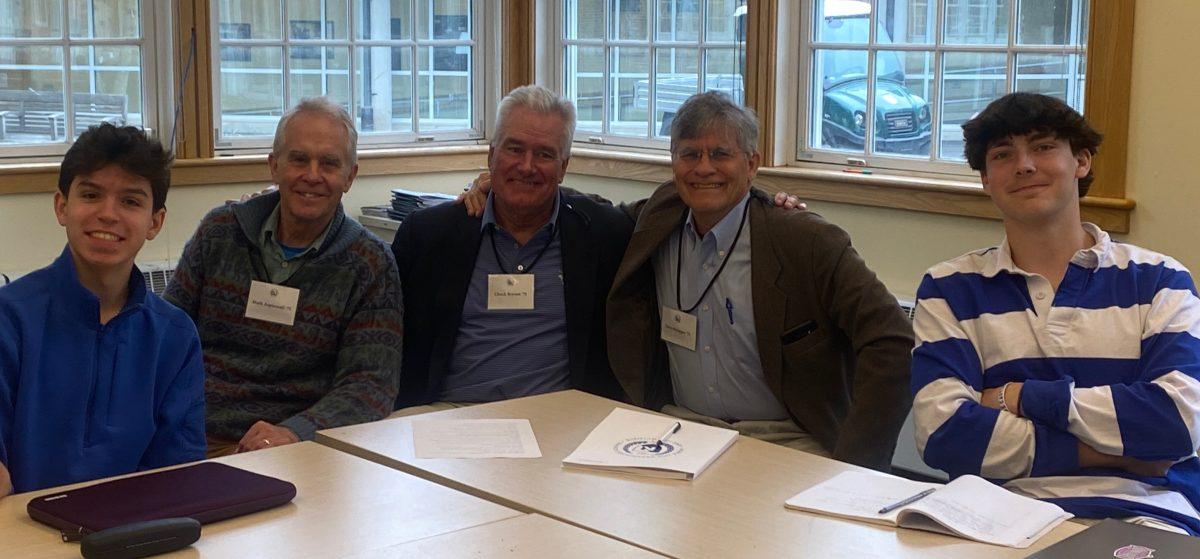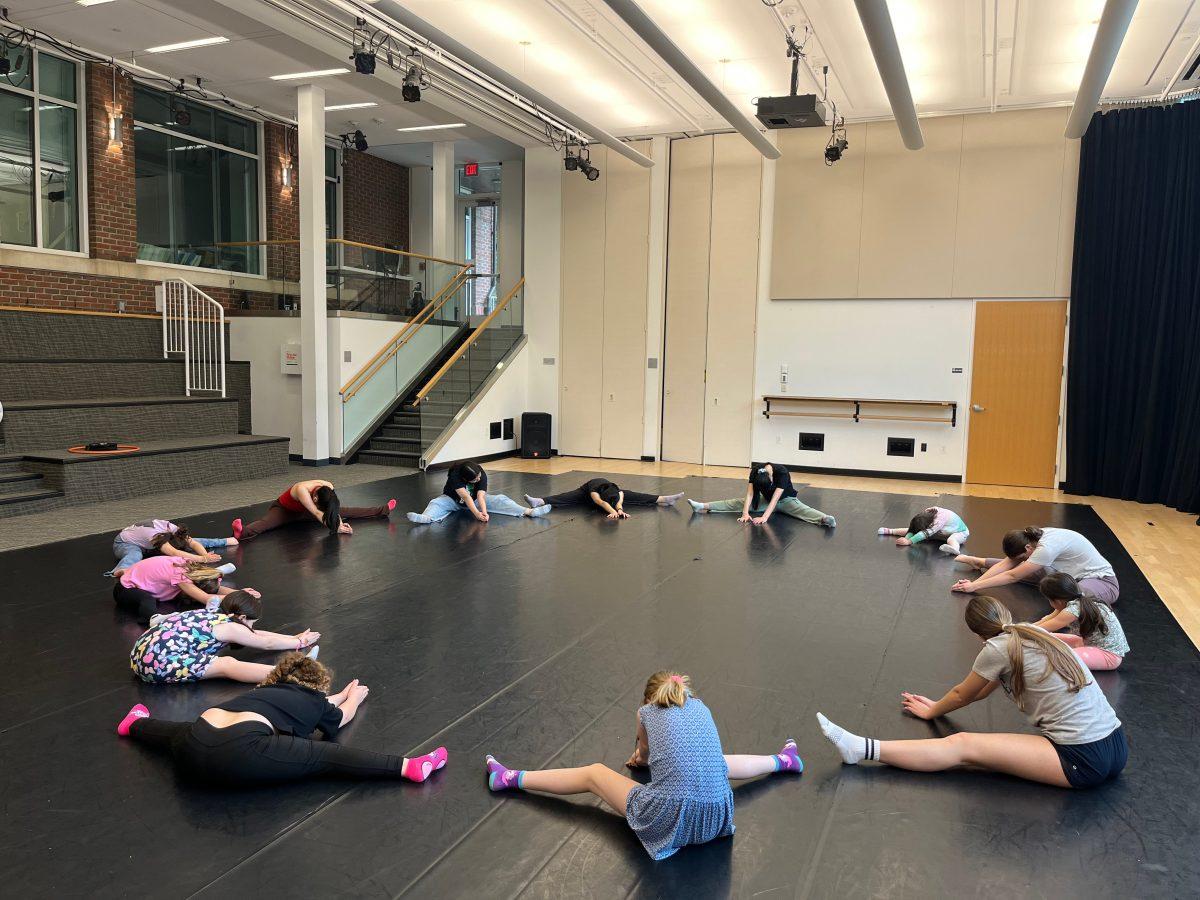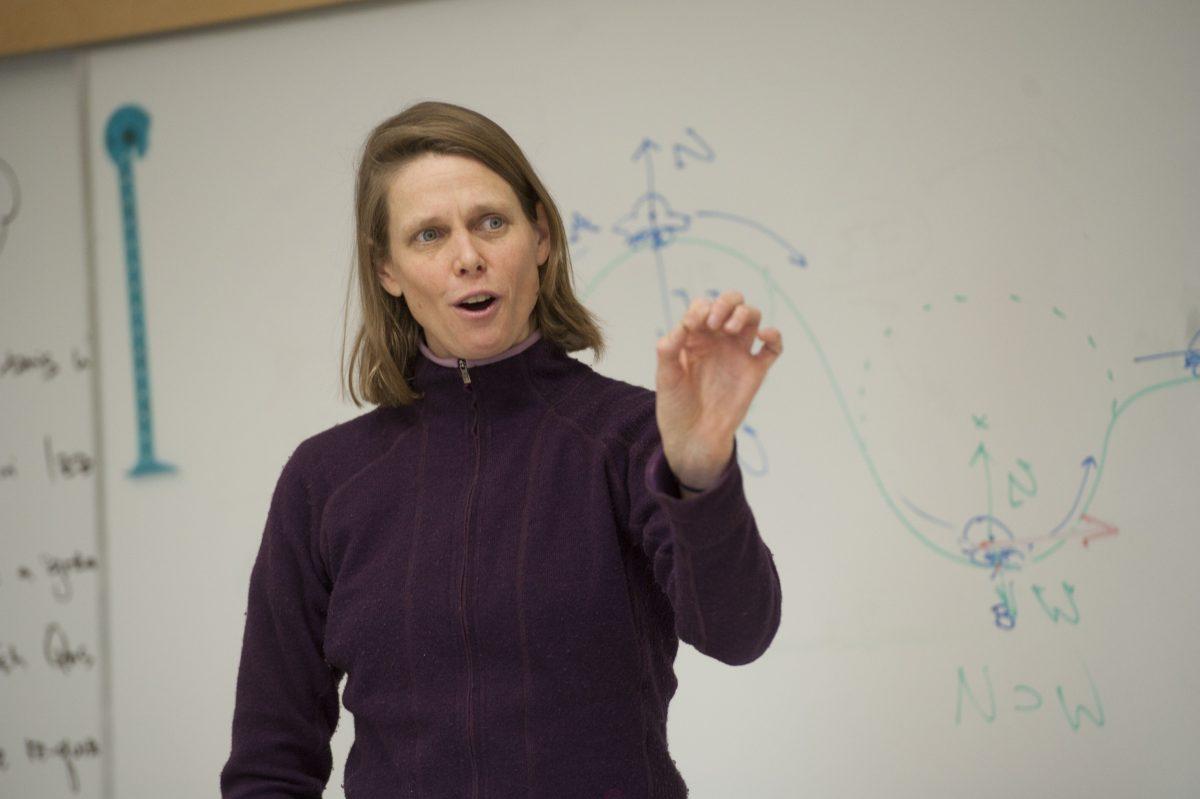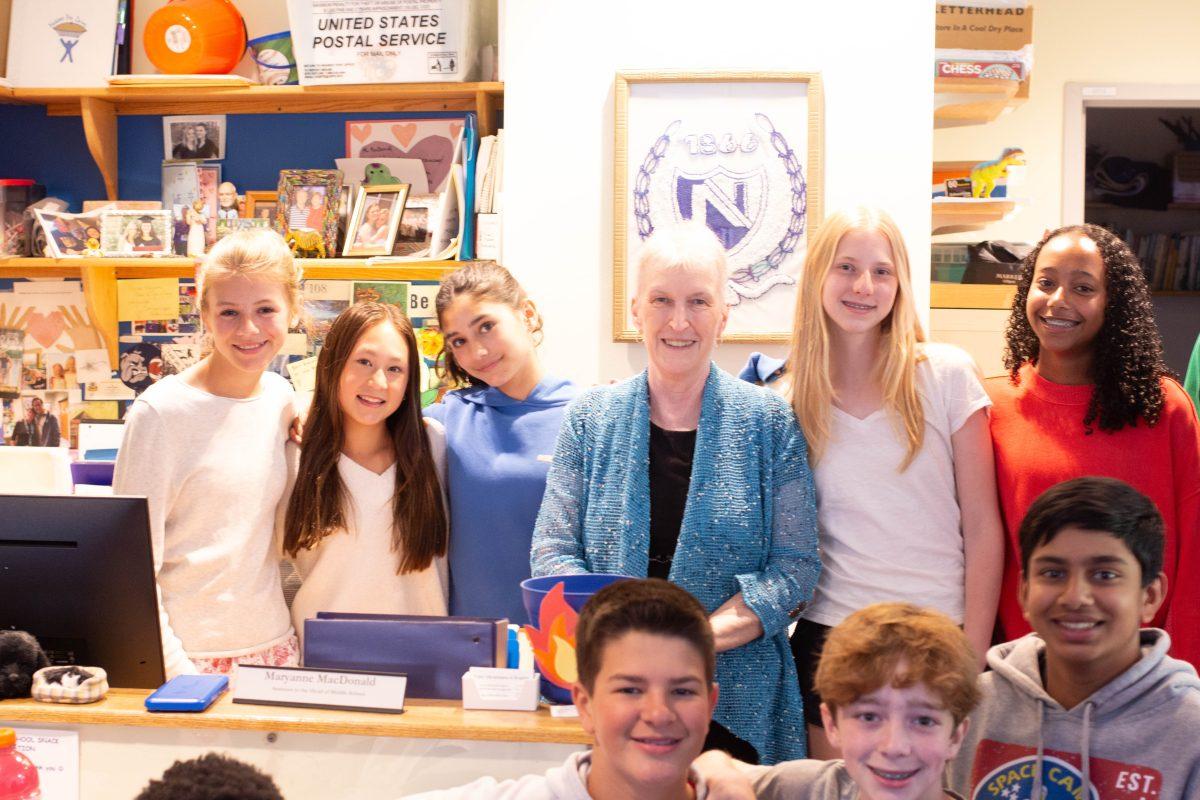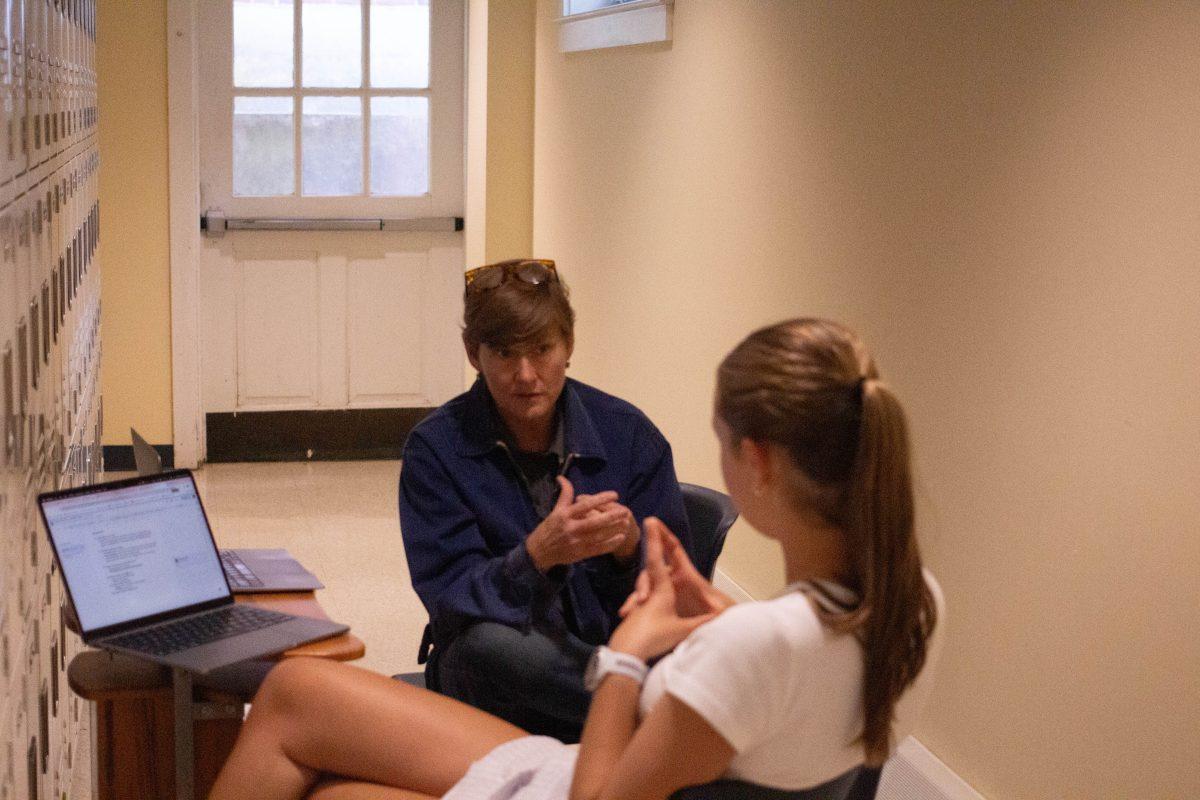The Putnam Library is a complex ecosystem home to many fascinating species. It is a true example of biodiversity at its finest. As we open the doors to the library, we are met with the first pack: The Snackers. Perched on two narrow windowsills in the vestibule, we will likely see a group of students with their cafe snacks. This area is a unique sector of the library biosphere, as many different packs will cycle through. Those with an affinity for the vestibule have evolved to withstand the “no food in the library” rule.
Continuing into the Reading Room, we are met with a buzz of energy. To the left is the junior section. The large central table provides the perfect area for “doing work.” Along the windows students recline in soft chairs, basking in the sunlight. But the back left corner? A hub of biological interaction! Another junior pack occupies a circle of chairs near the librarian’s offices. Members of these herds cram together in their respective social areas–likely in an effort to preserve heat.
The right section of the library ecosystem is a formidable habitat occupied by seniors. The round table in the back is home to a pack that will likely be seen engaged in some game, be it cards or a digital variation. In the center, there is a group of chairs taking up the space in the absence of the work table that exists in the junior section. Yet the senior herd is not fully missing the workspace. Instead, they gather at a table in the back left corner. Here, we will find a range of species, some hard at work, some hard at socializing. The senior section, however, is far less territorial than the junior section, and we are likely to witness packs intermingle.
But what is that ruckus coming from the left? As we turn the corner toward the “coffee bar,” we will be met by yet another pack of students. This species is one of the rowdiest in the ecosystem. This pack does something truly remarkable by managing to socialize and work at the same time. This ability to multitask productively is truly a freak of nature. Even still, if we happen to catch them in a conversation, we will likely witness a spirited physical interaction.
Simultaneously, another group of students is hidden between layers of stacks. This area is not occupied by one pack in particular but instead rotating groups of students. Some herds stand at attention against the stacks studying. But, if we look closely, we will see other herds gathered on the ground, seeking protection from the canopies of books above.
If we are looking for the most productive biosphere, the Quiet Room is the place to be. A large room, contained by glass windows, is home to some of the most studious species on campus. As quarters come to a close, we are likely to witness a high level of territorial behavior and competition regarding the chairs in this space. This sector of the ecosystem is a true paradox, sometimes empty and other times completely full, but what unites all of its inhabitants is the academic survival instinct seen by the species that occupy this space.
No matter what sector of this bustling ecosystem we find ourselves in, one thing is certain–we are guaranteed to find some form of Nobles’ wildlife. Whether it is in their primordial state, relaxing on the beach, or the less natural, forced inside by cold weather or piles of homework, the interactions between the diverse range of species are what help the ecosystem


